Na Chris Grinter, on May 30th, 2010 For the rarely reoccurring quiz series, here is a new image. Who is this moth?
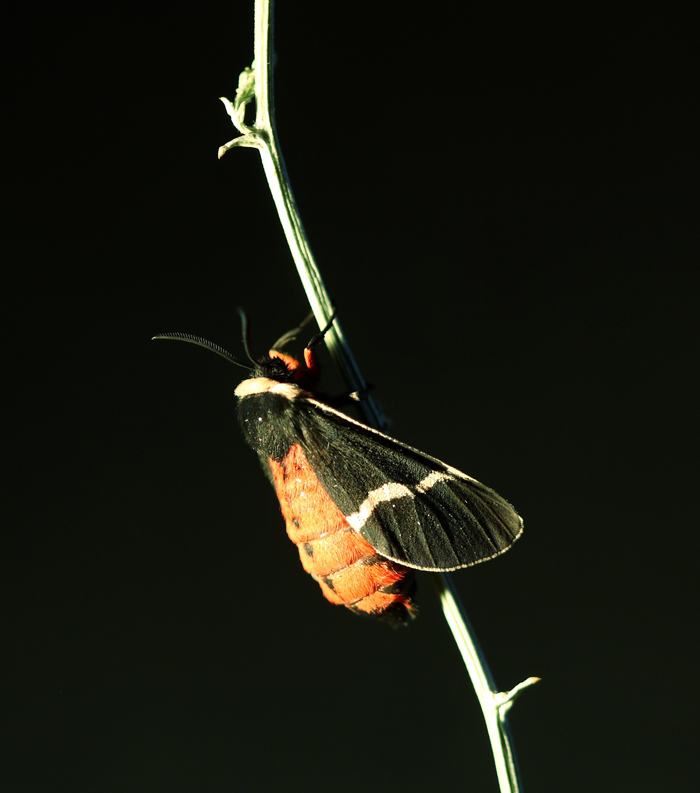
Na Chris Grinter, Mei 25, 2010 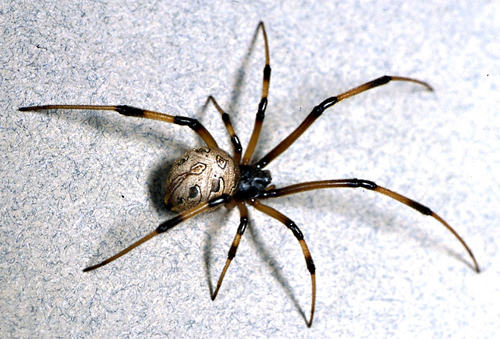
Kwa Californians wale kusoma, hasa wale wa kusini, kushika jicho nje kwa hii nzuri kidogo buibui, Latrodectus geometricus – mjane brown. Arachnologists at UC Riverside are monitoring the spread of this invasive species. Suala zinageuka kuwa kama hatari kama nyeusi mjane yetu ya asili. Hata hivyo, it is not from ’round these here parts (should be said in your best southern twang). If you find a specimen, especially if you’re not in LA/Orange/SD counties, you should contact the team at UCR.
Na Chris Grinter, Mei 25, 2010 With Korea teetering on the edge of a hot war, an ecological disaster of unprecedented proportion and civil unrest in Jamaica (someone harshed their mellow) – just to name a few of todays headlines from other sources – CNN takes the time to fluff up its front page.

I usually get a little excited when I come across articles like this because I always have hopes for something so ridiculous it has to be discussed. Thankfully CNN is run by teams of drunken marmosets who like to fling crap at us. Before the Skeptical Moth epoch I would share links to cover page stories on the findings of bigfoot, chupacabra and aliens with just a few friends or spread it around facebook. Now I can ridicule CNN on a google archived medium.
I just do not understand the point of this article. John Blake doesn’t discuss an explanation for this phenomenon, offer an opinion, or ask any questions. hakika, he asks if God really cares who wins, but that question isn’t any more valid than asking if my dog (also fictional) cares what kind of car I drive (unless of course it is psychic! umakini…people believe this). When I read articles like this I feel as if I am grading papers in a high school english class. There is no journalistic integrity, intelligent opinion or factual basis for the scribbling – there are just pretty pictures and words illustrating them. Setting the whole prayer and faith issue aside; athletes have always been known for their superstitions (another). The “acceptance speech” phenomenon undoubtedly falls under this category. After achieving a statistically small outcome (kuona hot hands), they are afraid of forgetting God in fear of magically losing their ability (not necessarily consciously). For some reason Blake restrains this article to only sports – perhaps he is intentionally playing into the massive demographic of American sports loving, bud-light swilling, christians – but clearly this is a reoccurring theme. At any awards ceremony God, Jesus or Allah is usually at the top of the thank-you list. Forget all that hard work and talent you might have, it was something or someone else. Abandoning all rational thought to a mystical being is a dangerous thing. This mindset is the same one that allows addicts to blame anyone but themselves (even if addiction is in part hard-wired), believe in faith healing, start a holy war, or let the Catholic church blame the devil.
CNN is flashing the lights and jingling the keys over the faces of their readers. Usually I leave it up to FOX news to insult my intelligence, but I am glad to know I have a choice in this market.
Na Chris Grinter, tarehe 24 Mei, 2010 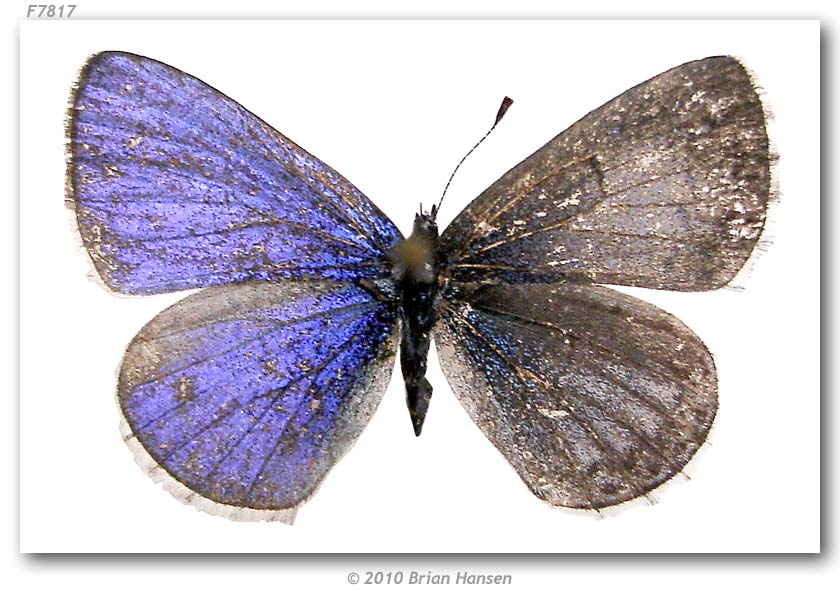
Tukio la mara moja katika maisha, a gynandromorph ya nchi mbili. Kwa kifupi, hitilafu wakati wa utofautishaji wa seli huunda ruwaza za kromosomu zisizolingana, ambayo husababisha usemi wa ngono usio na usawa katika wadudu wazima. Ikiwa haujabofya kiungo hapo juu, fanya hivyo, ni maelezo bora yenye picha za kupendeza.
Rudi kwa kipepeo. Nilikuwa shambani Machi hii juu ya uma wa katikati wa Mto wa Amerika kwenye kuwinda Xanthothtrix, pamoja nami alikuwa Brian Hansen na Bob Patterson. Bob na mimi tulikuwa kwenye misheni, kupata kiraka cha mbali cha Coreopsis juu udongo wa nyoka, na kupata nondo wetu mdogo adimu. Brian alikuja kufurahia siku hiyo na kuchunguza wanyama wa vipepeo. Wakati mimi na Bob tulienda mbele tukiwa na shauku ya kuona ikiwa siku za kupanda zingefaa, Brian alisimama mara kwa mara ili kupata leps za kupita. Pengine ilikuwa chini ya saa moja kutoka kwenye gari wakati tunasikia fomu nyuma yetu kwenye njia “Hey guys… Nadhani nimepata gynandromorph!!!” sawa, Nilikuwa na shaka. Bob na mimi tulikaribia kumuona Brian akiwa ameshika buluu kidogo mkononi mwake, ambayo bila shaka, ilikuwa gynandromorph ya nchi mbili. Nilipeperushwa. Bob amekwisha 50 uzoefu wa miaka kama lepidopterist mwenye bidii na hajawahi kuona mojawapo ya haya porini. Ili kufanya kazi hii kuvutia zaidi, kipepeo huyu mdogo wa buluu ni mmoja wa wadudu wa kawaida zaidi katika magharibi ya Amerika katika majira ya kuchipua. Leo, walikuwa wakiserebuka kwa wingi njiani, na sikuwa nimeacha hata kupepesa macho. Brian amefunga bao moja kati ya milioni moja. Labda ni laana ya mtaalamu wa lepidopterist ambaye atanizuia mara moja katika ugunduzi wa maisha yangu; lakini najua nitakuwa nikitazama kwa karibu hata kipepeo wa kawaida zaidi anaporuka karibu nami.
Kwa hivyo kama unavyoona, kipepeo ni nusu ya kiume na nusu ya kike (upande wa kulia ni wa kike). Ukitazama kwa karibu sana unaweza hata kuona mstari wima kamili unaogawanya mwili mara mbili ikiwa ni mdudu (inaonekana kama photoshop hariri karibu), gynandromorphism baada ya yote inaonyeshwa kwa mwili mzima na hata sehemu za siri zimebadilishwa kuwa maumbo ya kushangaza..
Sampuli hiyo iko kwenye mkusanyiko wa kibinafsi wa Brian Hansen, na unaweza kupata picha zilizopangishwa kwenye Tovuti ya Butterflies of America.

Na Chris Grinter, tarehe 23 Mei, 2010 
Kwa kawaida, ilipewa jina Phallus Drewsii. Hii inakuja kuunda orodha ya juu 10 aina zilizopewa jina katika 2009, inafuatwa na Chuo Kikuu cha Jimbo la Arizona (si orodha nzuri sana kama 7 za aina yangu mpya hazikuwepo…). Wakati mimi huwa na kuepuka phallic na Botania ya O'Keeffesque, hili sikuweza kulipinga kwa sababu lilipewa jina la mtu kutoka taasisi yangu. Dr. Robert Drews sasa ana fangasi mdogo wa uume aitwaye baada yake (kwa ruhusa). Ucheshi wa Taxonomia kazini.
Na Chris Grinter, tarehe 18 Mei, 2010 
Has just been posted over at Mende katika Bush. Nenda na ukague kanivali ya hivi punde ya nondo, mkusanyiko wa blogu ambazo zimeangazia nondo kwa njia moja au nyingine katika kipindi cha mwezi mmoja hivi uliopita.
Na Chris Grinter, tarehe 18 Mei, 2010 Habari kutoka India, mpiga picha wa kipepeo ametekwa nyara. Afisa wa hifadhi ya eneo hilo ambaye alikuwa akizuru mkoa wa kaskazini mashariki wa Arunachal Pradesh alichukuliwa usiku na genge la vijana waasi wenye silaha.. Juhudi za kumtafuta zimetatizwa na hali ya hewa na maeneo ya mbali. India hivi karibuni imekuwa moja ya nchi ngumu zaidi kufanya utafiti, na sasa sote tunakumbushwa juu ya historia yake inayoendelea ya vurugu. Mara nyingi ni ndani ya sehemu za mbali na mwitu wa nchi inayoendelea ambako kuna viumbe hai na wapinzani wapiganaji.. Nikiwa Ecuador kundi langu liliendelea kuwatazama waasi wa Columbian FARC ambao huenda walipotea kuvuka mpaka.; nashukuru ilikuwa ni uwezekano wa dakika moja tu wangekuwa hapo kwanza, na hakuna kitu kilichoonekana. Nadhani baadhi ya kazi yangu ya kuhuzunisha imekuwa katika majimbo ya bweni ya Marekani-Meksiko na huko Mexico kwenyewe. Wakimbiaji wa dawa za kulevya wangependelea kukupiga risasi kabla ya kukuuliza uondoke kwenye njia yao, na majambazi waliokuwa wakizurura walihusika na mauaji ya rafiki wenzao huko Oaxaca miaka iliyopita. Haishangazi, mvuto wa viumbe hai ambao haujatumiwa unaendelea kutuvuta. Kaa salama uwanjani!
Na Chris Grinter, on May 5th, 2010 Over a long weekend I’ll be out in the field. Stay tuned for incredible stories (no hype here…).
While I’m away enjoy the following from other excellent bloggers:
Continue reading Gone Collecting
Na Chris Grinter, on May 5th, 2010 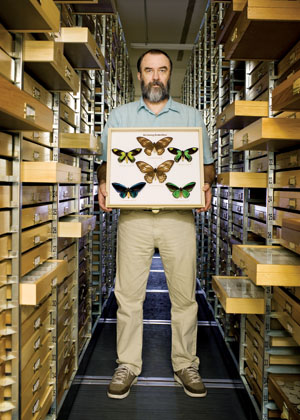 It’s good to throw a changeup every one in a while, and this week here is an article that is actually GOOD. Ndiyo, you read it here first, a positive article about entomology collections. We all need a breather after that Fox news fiasco with the Michigan State collection. The Honolulu Magazine does a really great job (hey… I knew that title sounded familiar… it’s a book by Mei Berenbaum) and they actually seem to get it. There are some great quotes from Dr. Neal Evenhuis (pictured) and Shepherd Myers; go read about the Bishop Museum’s collections and the awesomeness of being an entomologist on one of the most beautiful places in the world. Kweli, Neal, need a curatorial assistant? It’s good to throw a changeup every one in a while, and this week here is an article that is actually GOOD. Ndiyo, you read it here first, a positive article about entomology collections. We all need a breather after that Fox news fiasco with the Michigan State collection. The Honolulu Magazine does a really great job (hey… I knew that title sounded familiar… it’s a book by Mei Berenbaum) and they actually seem to get it. There are some great quotes from Dr. Neal Evenhuis (pictured) and Shepherd Myers; go read about the Bishop Museum’s collections and the awesomeness of being an entomologist on one of the most beautiful places in the world. Kweli, Neal, need a curatorial assistant?
Na Chris Grinter, on May 4th, 2010
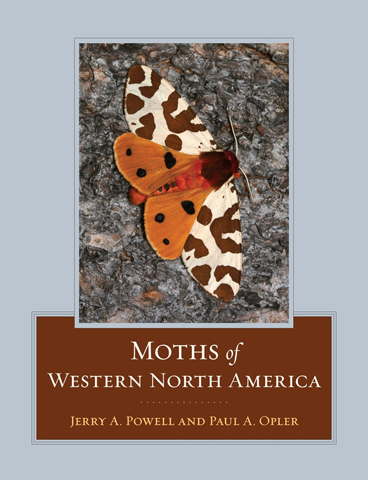
For those who are not aware, a new book hit the market at the end of last year. “The Moths of Western North America“, Powell and Opler. At only $95 it’s worth every cent (au $75 for the e-book, but I hate e-books). It’s a remarkable tome and the first of its kind for the western states. Not only is it a spectacular reference, but it sets the bar for all insect books. No, not every moth in the west is in there (that would break my desk and wallet at over 6,000 aina), but almost one of every genus and common or remarkable species has a photograph, life history and distribution. Most importantly it covers microlepidoptera. I grew up on the eastern counterpart, Moths of Eastern North America by Covell. I had two copies, one for the field and one for my desk – and had to replace the field copy at least once. It was a great book, but Powell and Opler have run laps around it.
The other good news is you can now access all 1,228 moth illustrations and corresponding data online for bure. Go to CalPhotos and search for Powell, au click here. The nice part about this is the somewhat smaller microlep photos in the book are available in high-resolution for better identification. Beautiful addition to the reference and easier than sending everyone a CD.
|
Wasiwasi
|









